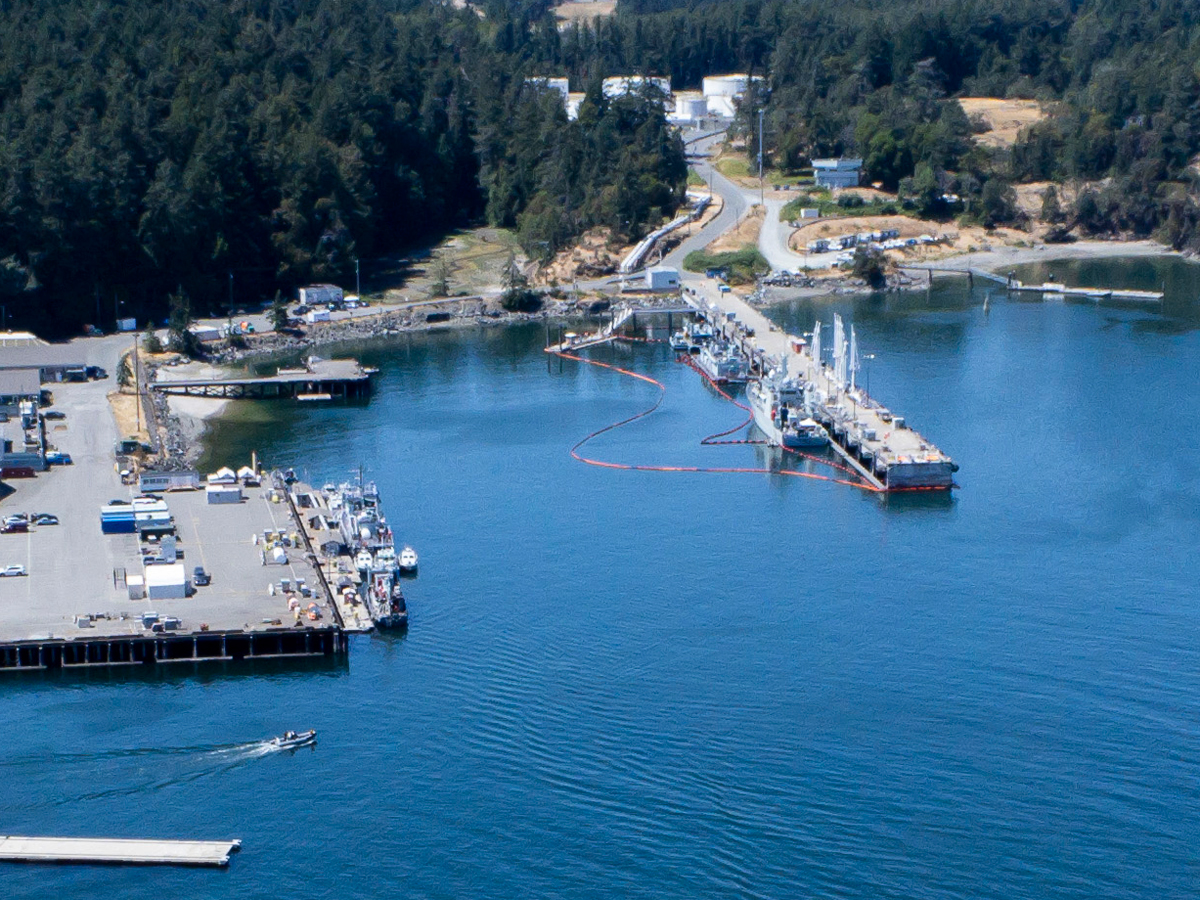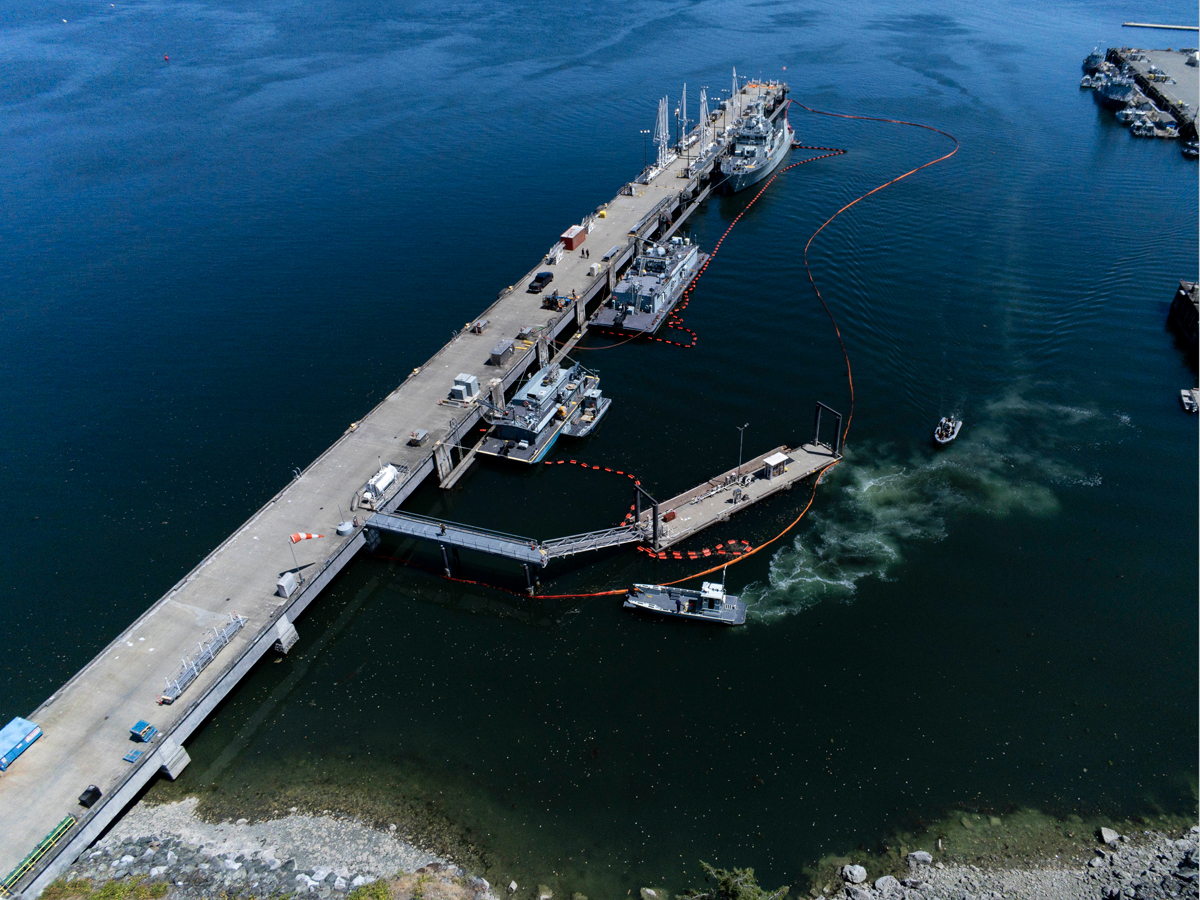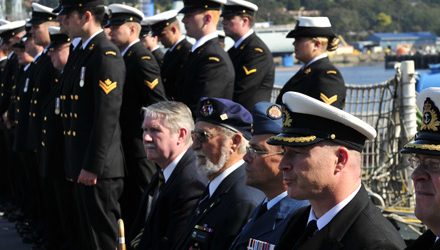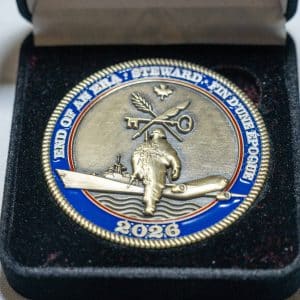
D and F Jetty seen from the East at CFB Esquimalt on July 10.
Photo: Sergeant Malcolm Byers, MARPAC Imaging Services
Peter Mallett,
Staff Writer
—
Teamwork and communication became key elements in an Environmental Emergency fuel spill exercise on July 10.
The scenario, led by the Environmental Protection Office, involved a refueling operation of HMCS Nanaimo which resulted in a simulated large spill of marine distillate (diesel) into the waters of Esquimalt Harbour. While no fuel entered the water during the exercise, the personnel focused specifically on the response and rapid deployment of fuel spill equipment and communication between first responders and coordinating efforts.
Over 20,000 feet of oil booms and equipment, including a fuel skimmer and absorbent pads, were deployed by the Kings Harbour Master (KMH) vessels around Nanaimo and the jetty in efforts to protect environmentally vulnerable ecosystems within the harbour, including Inskip Island, Richards Island, Plumper Bay, Thetis Cove, Dunn’s Nook, Limekiln Cove and Mill Bay.
The exercise aimed to increase preparedness of personnel and equipment in the event of a real-life spill of fuel or hazardous substances in Esquimalt Harbour, says Tracy Cornforth, CFB Esquimalt Formation Environment Officer.
“The exercise was an excellent opportunity to test our system and reflect on what worked well. Our response was excellent, quick and efficient, and the equipment, teams and communications functioned as intended,” Cornforth said. “Even so, we learned a lot, and follow-on discussions will help to iron out questions that came up during the exercise.”
This exercise is important as it is not only required by [Government of Canada] regulations, but it helps protect the environment and people by adequately preparing for, responding to and recovering from an emergency at the facility.”
The fueling facility, located a short distance from F-Jetty, holds approximately 21-million litres of diesel used to power vessels of the Pacific Fleet. Considered a high-risk location, it falls under CFB Esquimalt’s Base Emergency Response and Environmental Emergency plans and requires a full-scale emergency exercise every five years.
In these types of events, communication and collaboration is key, says Cornforth. During this exercise, there was a on-scene team making coordinated decisions led by Lyle Fairley, Port Operations and Emergency Services Branch Marine Environmental Emergency Response Officer and Incident Commander. An emergency operations centre was stood up at the Fire Hall where key staff supported the on-scene team and communicated with external groups such as regulators and neighbouring Indigenous communities.
“We assume that everyone will understand what their role is in an emergency and things will run according to plan but if people don’t practice, they forget what to do,” Fairley said.
Both Cornforth and Fairley acknowledge that emergency plan documents and tabletop discussions spelling out precise timelines and scenarios differ greatly from real-life situations where things seldom go according to plan. The exercise experienced a big setback early in the day with the delay of the cold move of Nanaimo to F-Jetty by a KMH tug, which resulted in a domino effect, delaying other key components of the scenario.
The exercise involved approximately 50 military members and civilian staff from 14 CFB Esquimalt units, and collaboration with Government of Canada agencies.

Members of the Incident Response Team conduct a spill response exercise (SPILLEX) at Canadian Forces Base Esquimalt, British Columbia on July 10.
Photo: Sergeant Malcolm Byers, MARPAC Imaging Services








